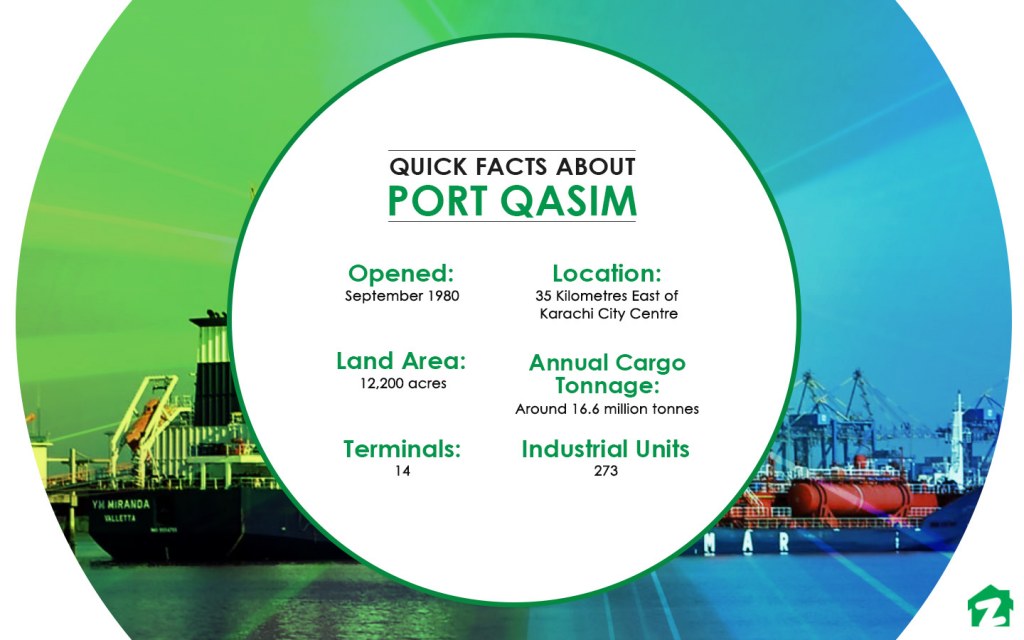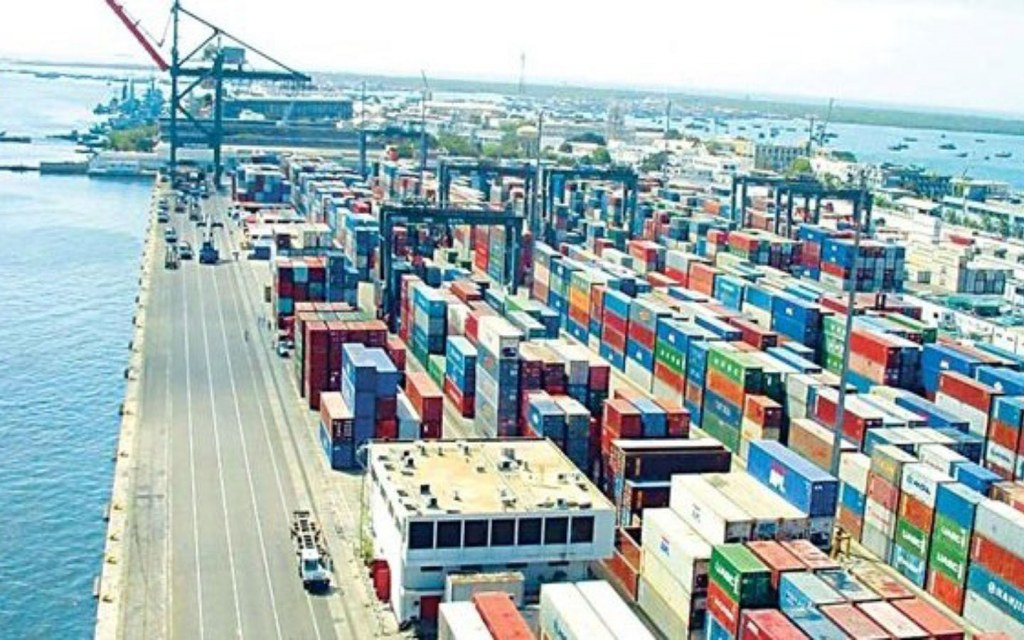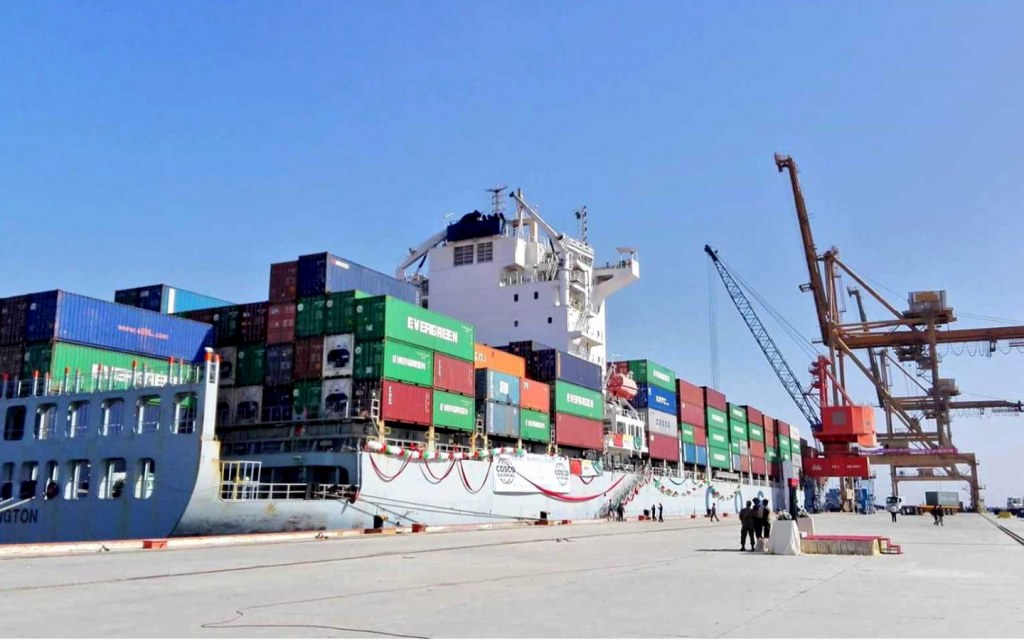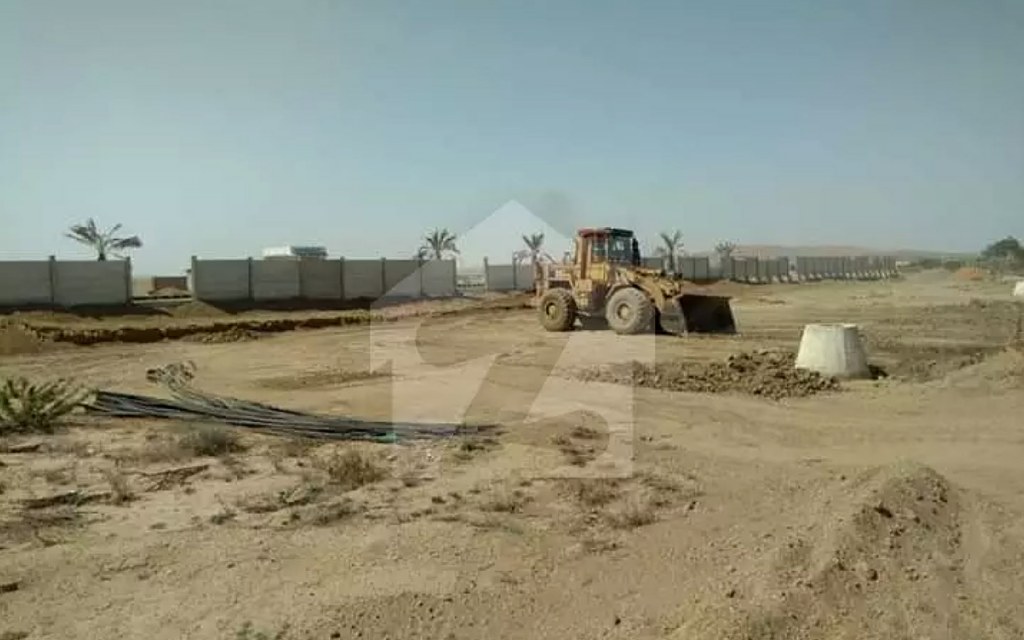Home » Construction » All About Port Qasim – The Second Busiest Port of Pakistan
Port Qasim, the full form of which is the Port Muhammad Bin Qasim, is Pakistan’s second busiest port that handles about 35% of the country’s cargo, which is roughly around 16.6 million tonnes. It is a deep-water port situated in Karachi along the Arabian Sea’s coastline and is managed by Secretary to the Government of Pakistan for Maritime Affairs under the banner of the Port Qasim Authority (PQA).

The port spans a total area of over 12,000 acres and is home to key industrial zones of Pakistan. Around 80% of the manufacturing and assembling plants of the Pakistan’s Automotive Industry are found here. Moreover, Pakistan Steel Mills and KE Bin Qasim Power Plant are another two significant landmarks in the vicinity of Port Qasim.
Location of Port Qasim
Situated at a distance of 15km from the National Highway, the location of Port Qasim effectively links it with the transportation infrastructure of the entire country. Bin Qasim Town, which is also one of the oldest and most famous towns in Karachi is found right adjacent to this port.

Port Qasim is constructed on an old channel of the River Indus, which is found at a distance of 35 kilometres from Karachi’s city centre. Due to its unique geographic position, ships and vessels can safely approach the port by moving along a 45-kilometre navigation channel.
Ensuring the safety of the cargo ships and vessels that are loaded/unloaded on the port after sunset, the Port Qasim Authority has recently introduced the night navigation system, which is considered a breakthrough in the country’s shipping industry.
History of Port Qasim
Named after the great Muslim conqueror, Muhammad Bin Qasim, Port Qasim was inaugurated in 1980. Ever since the opening, this port has witnessed a series of achievements throughout its history of almost half a century, which were all purposed for the boosting of the shipping industry and economy of Pakistan. Here’s a table that gives us a complete timeline of all these projects and facilities, which have been installed in all these years at the Port Qasim.
| Year | Achievement |
| 1973 | Foundation Stone Laid |
| 1980 | Inauguration of Port Qasim |
| 1980 | Opening of Iron & Coal Berth for use of Pakistan Steel Mills (handling capacity of 3.3 million tonnes per annum) |
| 1981 | Marginal Wharf with handling capacity of 6/7 million tonnes per annum having four multi-purpose berths |
| 1981 | Opening of KE Thermal Power Plant with 1260 MW of power generation capacity |
| 1993 | Inauguration of Indus Motors Automobile Plant spanning over 105 acres with US $100 total cost. |
| 1993 | Opening of IFFCo Pakistan Oil Refinery with manufacturing capacity of 0.4 million tonnes per annum |
| 1995 | Inaguration of FOTCO Oil Terminal having handling capacity of 9 million tonnes per annum |
| 1997 | Qasim International Container Terminal with handling capacity of 0.6 million twenty-foot equivalent units |
| 1998 | Chemical Terminal for Liquid Chemical Imports by Engro Chemical with capacity of 4 million tonnes. |
| 1998 | Inauguration of Bin Qasim Fertilizer Plant |
| 1998 | PPTA Plant having production capacity of 0.43 tonnes per annum |
| 1998 | Inauguration of BOC Gases UK Plant at a total cost of PKR 1.25 billion |
| 1999 | Opening of Engro Chemicals Plant at a cost of US$ 81 million for chemical fertilizer production |
| 2002 | Opening of Angro Asahi Polymer Plant at a cost of PKR 560 million |
| 2006 | Opening of Mapak Edible Oil Refinery at a cost of US$ 81 million |
| 2007 | LPG Terminal with 4 million tonnes of handling capacity |
| 2009 | Inauguration of Liquid Cargo Terminal with 4 million tonnes of handling capacity per annum |
| 2010 | Grain & Fertilizer Terminal with over 4 million tonnes of handling capacity |
| 2015 | LNG Fast Track Project with 170,000 cubic metres of LNG storage capacity |
| 2017 | Coal and Clinker/Cement Terminal with an expected storage capacity of 0.9 million tonnes |
| 2017 | 1320 MW Coal Jetty inaugurated with an unloading capacity of 70,000 million tonnes |
Facilities at Port Qasim

From berths/terminals and godowns to ship repairs and storage areas, the Port Qasim Authority offers a wide range of facilities to local as well as international shipping lines. Some of the top facilities available that assure smooth flow of operations at the port are listed in the following table.
| Facility | Purposed for |
| Multipurpose Terminal | Vehicles, General Bulk Cargo, Project Cargo and Machinery/Equipment |
| 1st Qasim International Container Terminal | Containers (carrying different types of goods) |
| Iron ore and Coal Berth | Coal Coke and Iron Ore for Pakistan Steel |
| FOTCO Oil Terminal | High Speed Diesel, Furnace Oil, MoGas, etc |
| Engro VoPak Liquid Chemicals Terminals | Chemicals (Phosphoric/Acetic Acid, Ethylene, EDC, and LPG) |
| 2nd Qasim International Container Terminal | Containers (carrying different types of goods) |
As stated above, the night navigation system, which has been introduced recently, is another key feature that assures safe transit of vessels after sunset.
Property Options in Port Qasim

Prices of plots available for sale in Port Qasim starts as low as PKR 54 lakh for 200 sq yd plots. The cost gradually increases with the increase in property size. The highest price that you can pay to own land as big as 8000 sq yds in Port Qasim is around PKR 17 crore. Since it is flanked by industrial areas and a shipping yard, Port Qasim is ideal for investors to set up warehouses, factories or manufacturing plants.
This brings us to the end of our overview of Port Qasim, one of Asia’s largest ports. If you have any questions or feedback related to our blog, please feel free to email us at blog@zameen.com
Subscribe to our email newsletter to get daily updates about our blogs or log on to Zameen Blog, Pakistan’s best property and lifestyle blog, to read more of our informative pieces.



